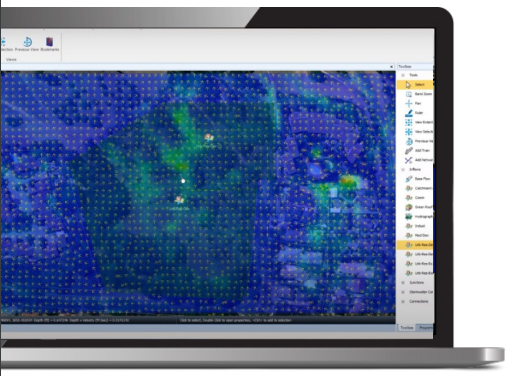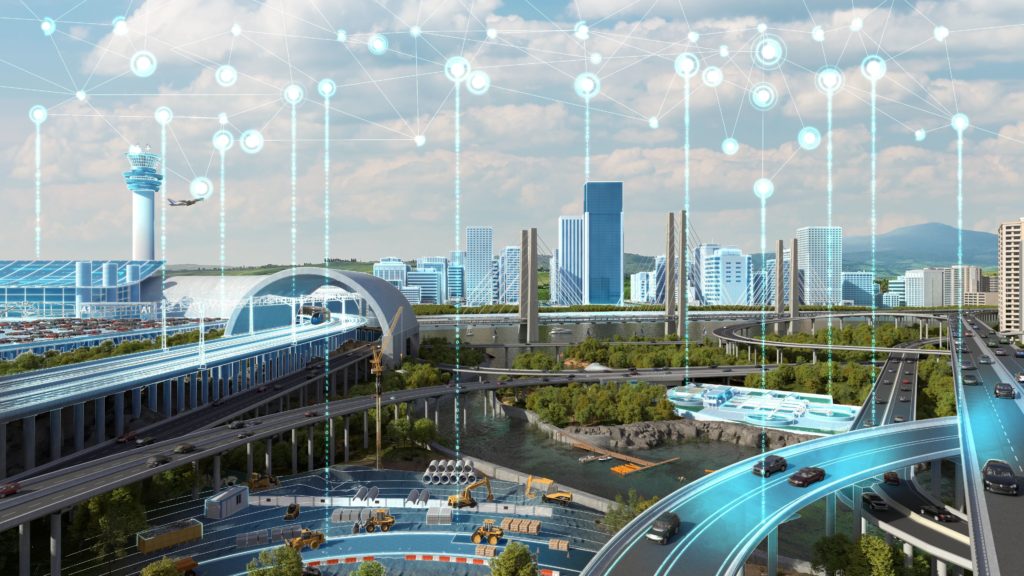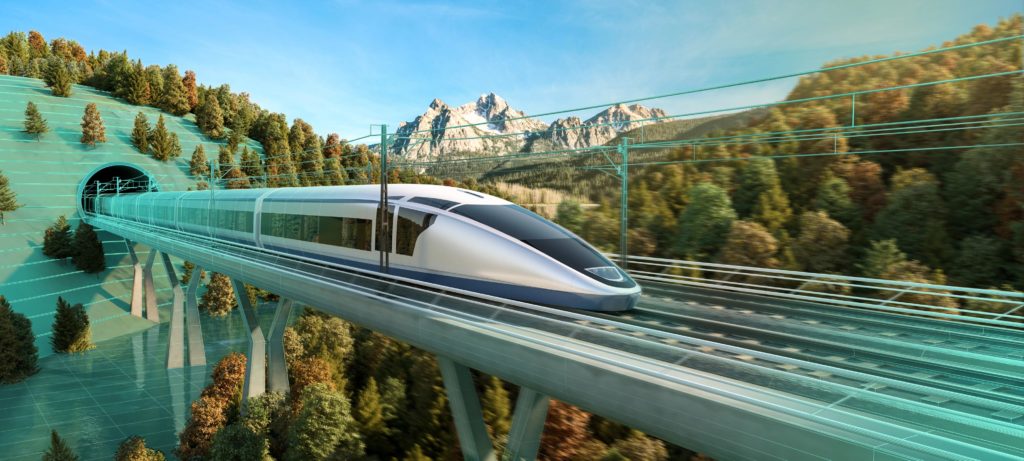As of April 30, 2025, we’re proud to announce our exciting new chapter. | Read more here.
If you are a design engineer or plan reviewer who works on stormwater conveyance systems, then you understand the difficulty and inefficiency that come from working with separate or outdated tools. Securing approvals for any land development is dependent on meeting regulatory requirements. These requirements are easy to miss as rules evolve and multiple stakeholders become involved.
If your design process is slow, error-prone, and not conducive to quick review and approval, the reality is your firm is likely losing projects.
The good news is that design and simulation software is evolving to the point where having a modern technology stack will help you design more quickly, and more accurately, and secure approval in an expedited manner.

For many firms – especially smaller ones – working between multiple data sources, design tools, calculators, and spreadsheets is a slower, and error-prone process. When working on a tight timeline, these issues can erode the competitive edge you have when bidding on projects. One big way to reduce these inefficiencies is to work in an integrated platform that is intuitive and easy to use.
By importing data from multiple sources – such as CAD, GIS, and Aerials – and having hydrology, hydraulics, inlet capacity, and spread all in a single environment, you can get a working model up and running with your required results easy to access. This helps streamline the design process instead of doing the work in separate places.
By running everything in a single platform with CAD, GIS, and aerial photos for context, you can easily understand if the facilities you are designing will appropriately convey flow for the range of required storm events.
Exporting CAD and LandXML files from the software is key to preventing any errors that might occur during the transfer of data from a software package to a set of design plans. By exporting these files, much of the line work and labeling is complete and can provide the basis of what is needed for a grading plan.
Reworking designs is costly, so more work that can be done to ensure a successful design during the design process will only help by providing an accurate design the first time around.
Changes to the site plan happen which makes it important to be able to quickly update a drainage plan, deploy alternative scenarios, and see the level of impact it will have on the site development plan.
When starting off a drainage plan, the first thing you want to know is where the water is already flowing. By easily visualizing a deluge, you can quickly get an idea of where water will naturally flow on a site to efficiently lay out your system. Along with simple calculators for accurate and efficient BMP sizing, you can be sure you’ll limit the amount of grading that’s needed on-site.

In a perfect world, all models would be accurate the first time around, however, that is usually not the case. To avoid the frustration of unexpected “surprises” and mistakes at the end of a model build it is useful to use a solution that allows for Validation. That way, you can quickly identify the areas in which you might have made a mistake and evaluate suggestions on how to fix it.
The goal of any model is to ultimately get work reviewed, approved, and put into a project. The more that your designs are ‘true-to-site’ the better off you will be throughout this entire process.
When the time comes to present a proposed development to improve an existing site, it is especially critical that:
Being able to minimize the error by exporting the linework, labels, and other plan information – as well as having built-in validation – ensures that the design will meet regulatory requirements. This only increases the chances that a design is accepted and project-ready. If you’re using a modern drainage design technology toolkit, then you could be going from a blank slate to a set of design plans in just 30 minutes!
Please contact us at info@microsolresources.com for more information.
For decades, Americans have felt the strain of the country’s aging infrastructure. The COVID-19 pandemic and the subsequent economic downturn have heightened the challenges faced by the U.S. in the design, construction, and maintenance of its civil infrastructure. But there is a bright side: technology is opening new doors.
The federal government is considering new policies and funding for more resilient infrastructure through technology. Trade groups are advocating for increased resiliency across all infrastructure projects, including roads and highways, bridges, water access, transportation, and more. Now, more than ever, the government and industry are working together to foster better use of technology in infrastructure development. Technology companies can play an important role in bringing together U.S. policymakers, trade organizations, and the private sector to understand the societal benefits of scaling the adoption of digital technology in design and construction.
We can help solve America’s infrastructure challenge and close the gap between the current investment and long-term need by leveraging technology to increase collaboration across projects and throughout the industry. With additional investment in infrastructure and technology and smart public policies, the country can meet its infrastructure needs in ways that reduce project costs and better manage budgets, create jobs, improve safety, and deliver more sustainable and resilient projects. Autodesk spoke with industry leaders to learn how the U.S. government, technology companies like Autodesk, and AEC organizations are working together to move infrastructure policies and projects forward.
The American Society for Civil Engineers (ASCE) believes that modernized transportation, water, energy, and communication networks can help reduce carbon emissions and improve environmental health. In order for a sustainability strategy in infrastructure to be successful, a variety of issues must be considered.
“Sustainability is a triple bottom line for infrastructure.
Are the economics strong? Have the environmental issues been addressed satisfactorily? Is there social support for what you’re trying to do? Sustainability is a three-legged stool for success,” said Casey Dinges, Senior Managing Director of ASCE.
Of course, government agencies, construction firms, and civil engineers can’t build a more sustainable future on their own — they need the support of technology, tax dollars, and smart policies. Theo Agelopoulos, Senior Director of Infrastructure at Autodesk, shared how the use of advanced technologies to create more resilient infrastructure will help the country do its part to close the global infrastructure gap.
For example, building information modeling (BIM) helps engineers to make more sustainable decisions earlier in the design process. BIM technology allows them to see the entire infrastructure
project in the context of the real world, so they can do the complicated analysis upfront. One of the efficiencies BIM has added to infrastructure design is the ability to simulate the different materials that can be used to make a more resilient asset.
BIM can also help city governments plan for the effects of climate change. “Take the trillion-dollar assets that sit on America’s coast. The ability to simulate floods or rising sea waters can begin to
identify which parts of a city are at risk. So the city, state, or federal government can take more preventive actions and proactive planning around protecting those assets before a disaster arrives,” Agelopoulos said. 3D visualizations for mapping and modeling are helping teams evaluate construction and material requirements, which leads to more energy efficiency. Such optimizations can lead to more sustainable and more cost-efficient infrastructure assets.
“We know that we have to do more — better — with less impact on the environment,” Agelopoulos said. “We want to see faster adoption of digital technology in design and construction, and for the government to incentivize digital supply chains.”
Companies like Autodesk are helping organizations such as ASCE adopt digital technology and scale their teams to increase efficiency across infrastructure projects. But according to Dinges, today’s civil engineers may need more than simply becoming early adopters of digital technology.
There are two things that civil engineers need to be successful in this industry: Technical basis and people skills. The future of infrastructure is attending community meetings, but also talking with state legislators, lobbyists, members of Congress, and the media. You’ve got to be able to connect with people in terms that they understand.
Casey Dinges
Senior Managing Director of ASCE
“There are two things that civil engineers need to be successful in this industry: Technical basis and people skills. The future of infrastructure is attending community meetings but also talking with state legislators, lobbyists, members of Congress, and the media. You’ve got to be able to connect with people in terms that they understand,” he added. The powerful AR/VR visualization capabilities enabled through BIM, 3D automation, reality capture, and more can help engineers better communicate to policymakers the benefits, features, and funding requirements of their projects.
This is part of the reason why Autodesk not only builds the technology that infrastructure teams need for addressing the country’s aging infrastructure, but it gives them tools to communicate with policymakers and other community stakeholders about the benefits of projects. Autodesk also makes its technology available to educational institutions so that the next generation of
architects, civil engineers, and contractors have the digital skills to continue working toward a more resilient infrastructure.
“For the next generation of engineers, the measure of success is going to be how quickly they can enter the workforce to be productive — if graduates have an earlier impact from what
the industry has seen in the past,” Agelopoulos said.

According to the American Public Transportation Association (APTA), modernized public transportation will lead to a stronger U.S. economy, a cleaner environment, and more job creation.
Government funding plays a large role in modernization, whether that be in modernizing roads and highways, bridges, or public transportation. “Some of the biggest challenges facing transportation infrastructure are funding and making sure that the U.S. has what we need to support a 21st-century economy,” said Jonna Huseman, Communications Director of the Transportation Trades Department (TTD).
“We need to stop politicizing how we fund transportation in infrastructure. We need to support projects that move us all forward.” Kip Eideberg, Senior Vice President of Government and Industry Relations at the Association of Equipment Manufacturers (AEM) notes how funding for infrastructure projects needs to get allocated more efficiently across all areas of infrastructure.
“Looking at the whole portfolio—ports, bridges, waterways, rural broadband — those are all critical parts to what we need to be successful, not only for us to live but for us to be a leader in the global economy,” he added. Trade organizations point out that investment in digital technologies can not only help to modernize the entire spectrum of infrastructure projects, it can also generate many added benefits— including increased efficiencies, lower project costs, and more safety.
“Technology provides an efficiency out there, not only in getting work done. For example, technology can make it less expensive to build a road, but also it can ensure that the road lasts longer,” Dennis Slater, President of AEM said. In the private sector, this is more prevalent. For example, reality capture used in construction can reduce rework, resolve issues faster, and increase quality. Companies are using BIM to standardize workflows that increase efficiency and lessen design coordination time.
When it comes to the public sector, however, technology companies like Autodesk believe that it’s not just about increased funding for project budgets, but better leveraging the budgets that already exist. For example, governments should do more to adopt and incentivize the use of BIM and digital construction management technologies that help deliver better projects within the constraints of existing budgets.
Technology provides an efficiency out there, not only in getting work done. For example, technology can make it less expensive to build a road, but also it can ensure that the road lasts longer.
Dennis Slater
President of AEM
“Delivering better projects eliminates waste and cost, and it should reduce long-term operating costs as well,” Agelopoulos added. “BIM really helps better use existing capital, and that’s really step one.”

Autodesk is pushing for significant investment in infrastructure spending to spur economic growth and for new policies that foster better use of digital design and construction management technologies. This will make that investment go further to build better, more resilient infrastructure, using less money and less time.
If we invest in infrastructure, we really create something better than what it was — new jobs, safety, more efficient roads, and bridges. Plus, it makes the U.S. more competitive.
Dennis Slater
President of AEM
“If we invest in infrastructure, we really create something better than what it was — new jobs, safety, more efficient roads, and bridges. Plus, it makes the U.S. more competitive,” Slater added. Industry leaders are confident that the U.S. Congress will significantly fund infrastructure, but they also hope they will include policies to promote advanced technology and tools needed to move the country forward.
Integrate BIM and GIS to enable more collaborative workflows that advance understanding of projects in context, minimize data loss, and reduce inefficiencies. Stay ahead of the curve and engage with our building and infrastructure specialists.

Features the latest informative and technical content provided by our industry experts for designers, engineers, and construction firms and facility owners.
LEARN MORESTAY IN TOUCH